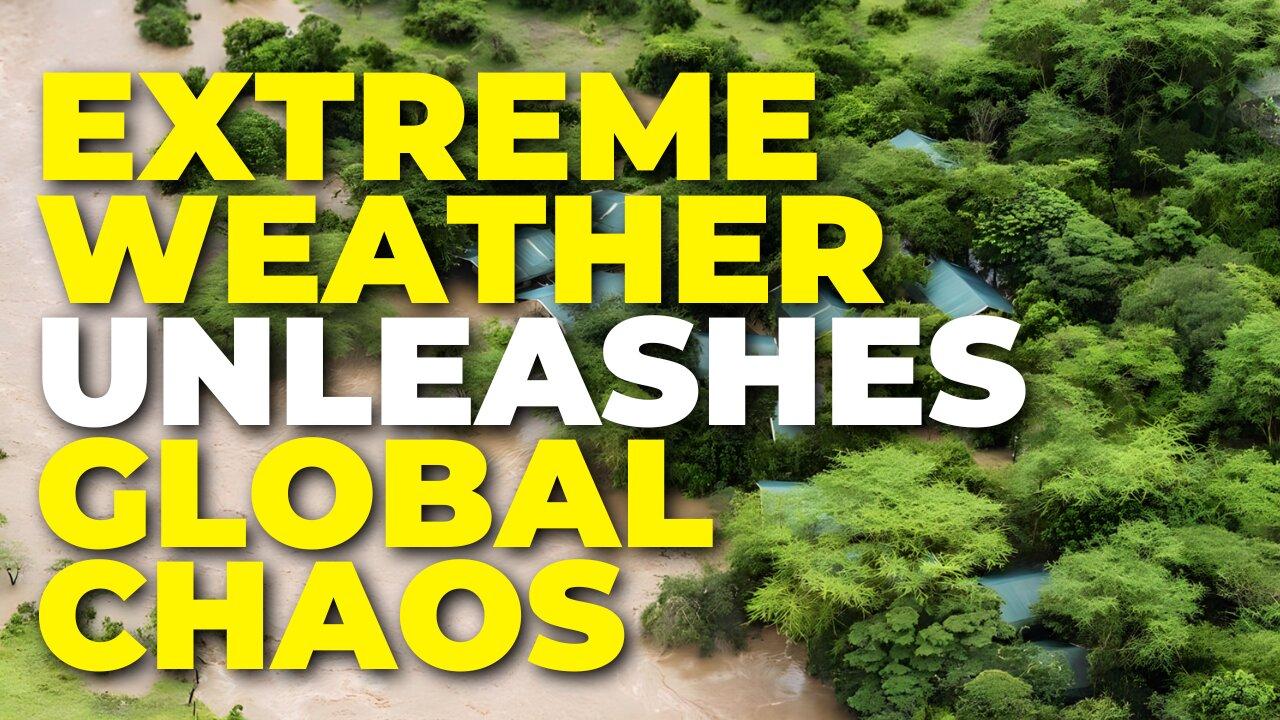
Brace For Impact: Today’s Explosive Weather Unleashes A First Alert
An Urgency to Address the Threat
Today’s increasingly volatile weather patterns demand immediate attention. Extreme weather events, once considered anomalies, are becoming alarmingly commonplace, leaving a trail of devastation and human suffering in their wake. From hurricanes to heatwaves, floods to droughts, the consequences of climate change are undeniable.
This news article aims to critically examine the complexities of today’s explosive weather, exploring its causes, consequences, and potential solutions. By analyzing data points, real-life examples, and perspectives from experts, we hope to provide readers with a comprehensive understanding of this urgent issue and inspire informed action.
The Gathering Storm: Causes and Contributing Factors
Greenhouse Gas Emissions and Climate Change
Anthropogenic activities, particularly the burning of fossil fuels, have led to a significant increase in greenhouse gas concentrations in the atmosphere. These gases trap heat, causing global temperatures to rise. Consequently, the atmosphere holds more moisture, leading to intense rainfall and flooding.
Changing Ocean Currents
Climate change also disrupts ocean currents, such as the Gulf Stream. These currents play a crucial role in regulating global weather patterns. Their alterations can shift weather patterns, causing extreme temperatures, droughts, and increased storm activity.
Urbanization and Land-Use Changes
Urban development and deforestation can alter local weather conditions by creating heat islands and affecting precipitation patterns. Deforestation reduces the Earth’s capacity to absorb carbon dioxide, further contributing to climate change.
The Devastating Impacts: A Global Crisis
Human Loss and Displacement
Extreme weather events often result in loss of life, injuries, and displacement. Hurricanes, floods, and droughts can destroy homes, infrastructure, and communities, leaving survivors with the trauma of loss and the challenges of rebuilding.
Economic Losses and Food Security
Severe weather can cripple economies. Coastal areas are particularly vulnerable to hurricanes and storm surges, causing billions of dollars in damage. Agricultural regions face droughts and floods, affecting crop yields and food security, potentially leading to malnutrition and famine.
Health Impacts
Heatwaves can cause heat exhaustion, heatstroke, and respiratory issues. Air pollution, often exacerbated by extreme weather, can trigger asthma, heart problems, and other health conditions. Prolonged exposure to poor air quality can have severe long-term health effects, especially for vulnerable populations.
A Tapestry of Perspectives: Challenges and Opportunities
Perspectives on Climate Change
The scientific community overwhelmingly agrees that human activities are the primary driver of climate change. However, the extent to which climate change contributes to specific weather events is often contested. Some argue that other factors, such as natural climate variability, play a significant role.
The Role of Governments
Governments have a central role in addressing extreme weather. From implementing mitigation strategies to investing in resilience measures, there is a need for comprehensive policies and international collaboration. However, political will and economic constraints can sometimes hinder progress.
Community-Led Initiatives
Local communities play a crucial role in building resilience. Grassroots organizations and community-based initiatives can implement adaptation measures, such as early warning systems, sustainable farming practices, and disaster preparedness plans. These initiatives empower communities and foster a sense of ownership.
Proactive Solutions: Adapting and Mitigating
Adaptation Strategies
Adapting to the impacts of extreme weather is essential. Governments and communities must invest in infrastructure that can withstand stronger storms and rising sea levels. Resilient building codes, improved drainage systems, and coastal protection measures are vital.
Mitigation Efforts
Simultaneously, mitigation efforts to reduce greenhouse gas emissions are crucial. Transitioning to renewable energy sources, promoting energy efficiency, and reducing deforestation are essential. Climate change mitigation not only reduces the frequency and intensity of extreme weather events but also creates a cleaner and healthier planet.
Education and Awareness
Education and raising awareness about extreme weather and climate change are vital. Informed citizens can make more responsible decisions and advocate for policy changes. Schools and communities must play a key role in educating the next generation about the urgency of these issues.
Conclusion: A Call to Action
The complexities of today’s explosive weather cannot be understated. Climate change, urbanization, and land-use changes have created a perfect storm, leaving us vulnerable to increasingly devastating extreme weather events. While scientific understanding continues to evolve, the overwhelming evidence points to human activities as the primary driver behind these changes.
Addressing this crisis requires collective action and a sense of urgency. Governments must prioritize climate mitigation and adaptation strategies, while communities and individuals must play their part. Education, awareness, and proactive solutions are essential to building a more resilient future.
As the weather intensifies and the consequences worsen, it is imperative that we take bold steps today to secure a safer and more sustainable tomorrow. The time for complacency has passed. The time for action is now.
